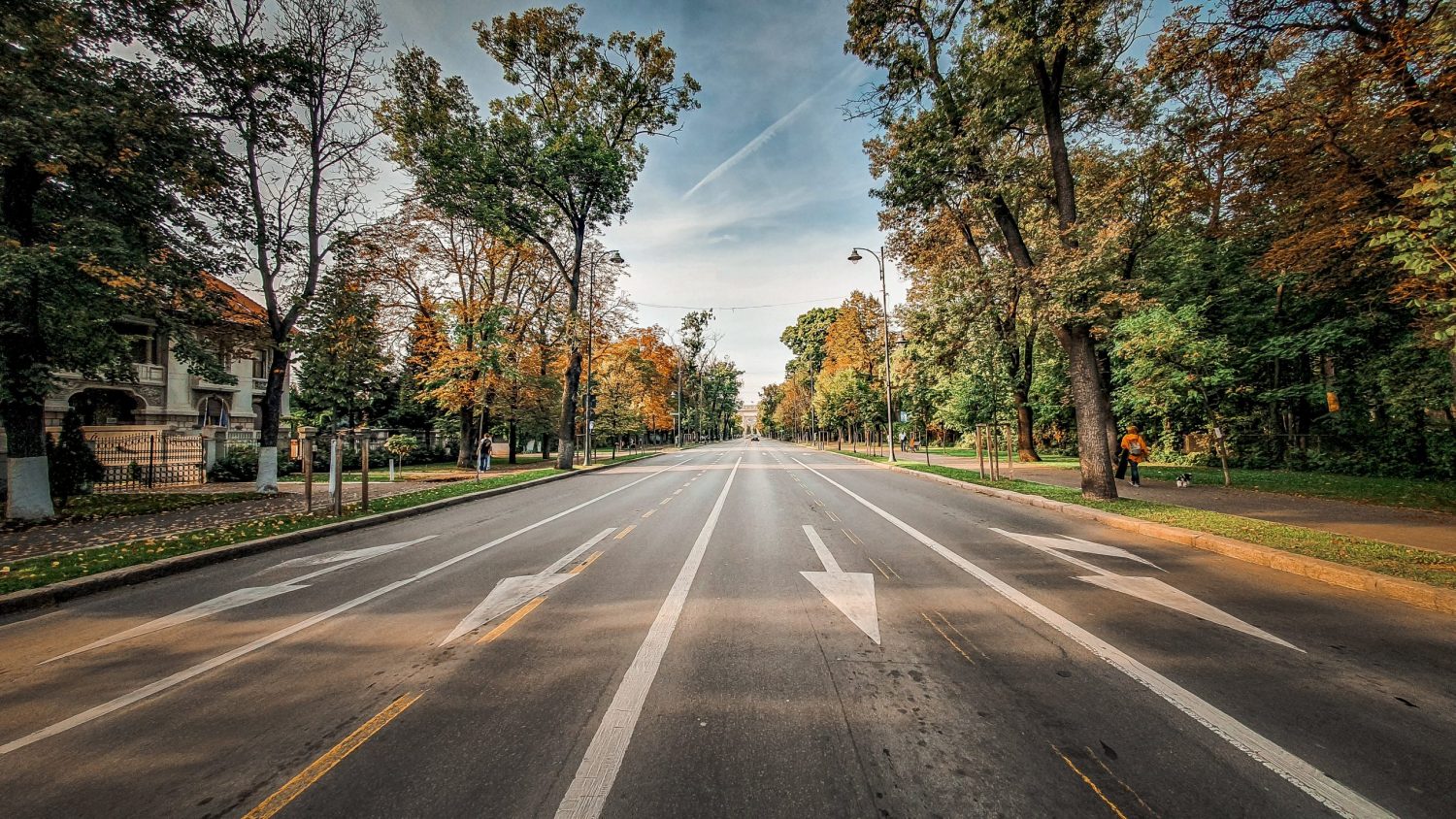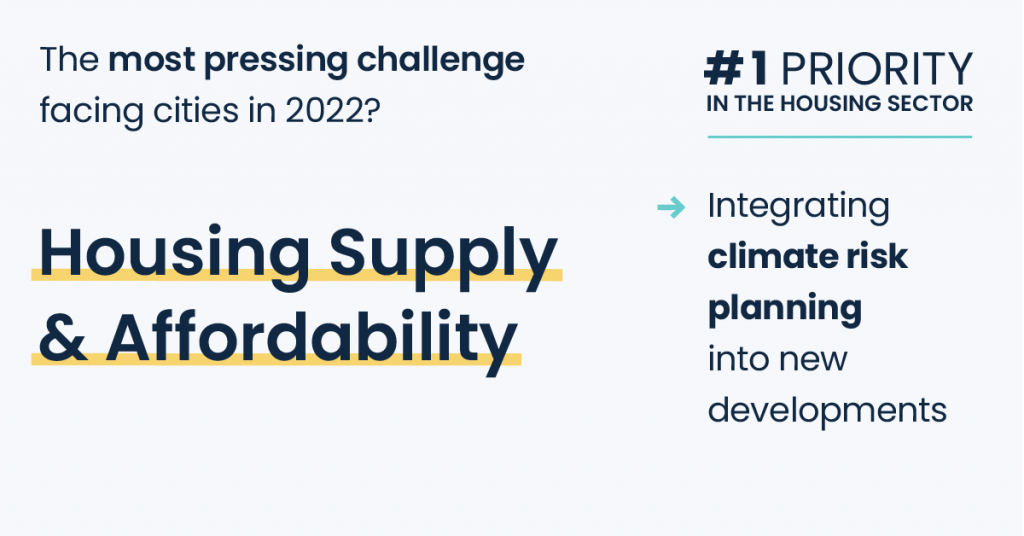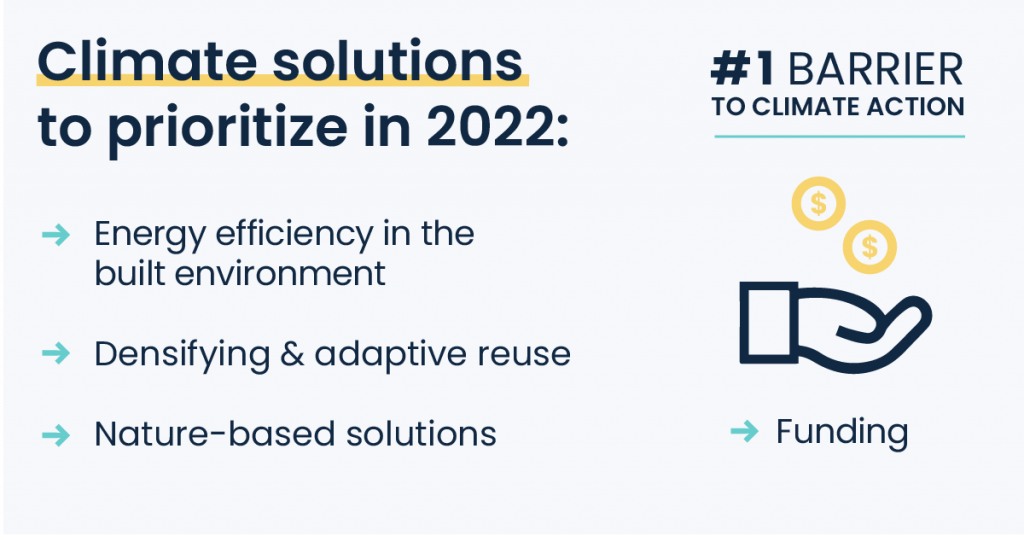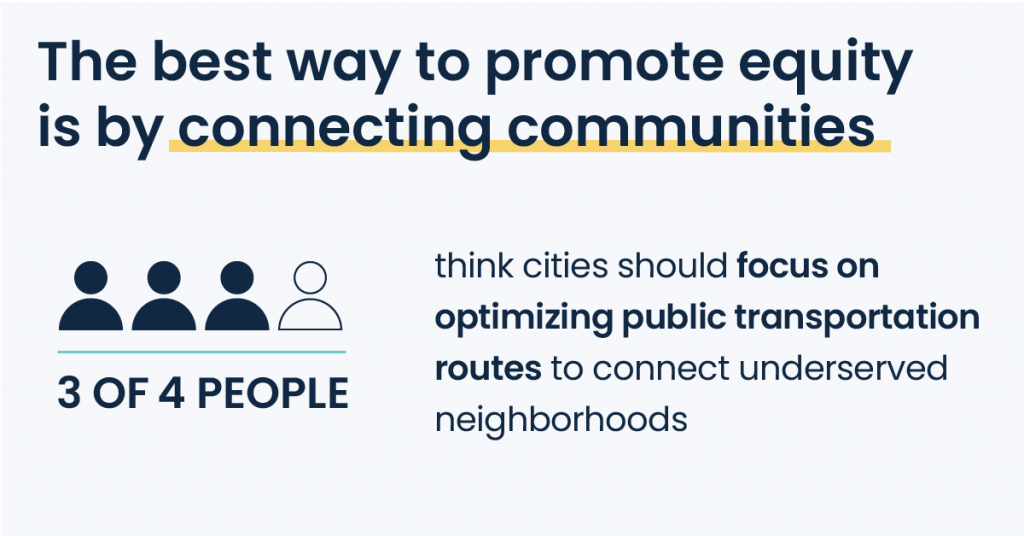
A Roadmap For Cities in 2022
December 1, 2021 — The Big Picture
Discover community-led solutions to some of our most pressing urban challenges:
Action for Community Wellbeing: Developing Affordable Housing and Small Businesses
By Julie Rusk and Tara Barauskas
Mexico Redefines the Right to Safe Mobility
By Claudio Sarmiento-Casas
Housing supply and affordability is the most pressing challenge cities will face in the coming year, according to a NewCities survey.
The pandemic drove us to think differently about many urban issues, ushering in a new wave of priorities and trends. Reimagining public space and promoting wellbeing became central to conversations, enabling concepts centered on accessibility and connection like the 15-minute city to flourish. Social isolation and new working conditions were met with new ideals on community and care. Now, as we continue to navigate the COVID era, what trends should we embrace and which should we rethink?
To grapple with these questions, NewCities launched a survey to understand how our community of urban practitioners perceived the greatest challenges ahead and how to prioritize action.
We designed the survey to focus on five areas of concern, namely housing, climate, wellbeing, mobility, and equity. What we found is that it is difficult to segment solutions into rigid boxes. A policy solution for mobility might also target climate objectives, and promote wellbeing. This is good news. It demonstrates the natural overlaps within the public realm and opportunities for cross-sectoral collaboration to tackle some of our biggest urban challenges.
Specifically, responses indicate that focusing on climate, housing, and equity—or a holistic blend of the three—will be the most robust way for cities to redress the exacerbated inequities experienced during the pandemic and our best bet for building more vibrant, connected, and inclusive cities in the year to come.
To share our findings, we’ve put together a Roadmap for cities in 2022.* Let’s take a look!
When asked how cities can best promote the wellbeing of residents, findings show that investing in affordable, safe housing should be a priority.

The survey found that the vast majority of people in our network — 69% of respondents to be exact — agree that housing supply and affordability will be the most pressing challenge cities face in the coming year. Coming before environmental threats, public health, and aging infrastructure, among others.
Yet, when asked about the number one priority for the housing, real estate, and development sectors, respondents voted that integrating climate risk planning into new developments should take precedence. This choice aligns with recent research conducted by the Pew Research Center stating that nearly three-quarters of people living in the world’s most advanced economies see climate change as a personal threat.
In many locations, climate risk data is becoming more freely available for homebuyers. The San Francisco-based company ClimateCheck offers free risk assessments on all homes in the US, and real estate brokerage Redfin is now putting these ratings front and center in listings. (See our conversation with Redfin’s Chief Economist Daryl Fairweather.)
Although this is a step in the right direction that allows consumers to make more informed decisions about where to buy, climate risk planning must be incorporated on all levels of policy, programs, and design. As resilience and sustainability planning gets pushed to the top of leaders’ agendas, broader conversations about the vulnerability of entire communities (beyond those who can purchase a house) and the consequences of displacement will have to become more commonplace.
So, what climate solutions should cities prioritize right now to mitigate the crisis?

In the survey, three out of four people said that investing in energy efficiency should be the number one priority for governments this year. Reducing energy expenditure in the built environment presents a logical solution for cutting emissions, considering that energy use in buildings and construction account for one third of greenhouse gas emissions. Despite this data illustrating the impact it could have, retrofitting buildings with low emission technology still remains underutilized due to insufficient government funding, according to the International Energy Agency.
These findings align with our survey results, which also identify funding as the greatest barrier to climate action in cities. Governments must continue to ramp up efforts to direct spending towards green technologies, along with putting in place effective energy-efficient policies and phasing out fossil fuel-based assets and subsidies. The private sector has a role to play as well, with private models such as the creation of ‘green banks’ emerging to bridge funding gaps that exist in the public sector.
Other solutions identified to explore more in the coming year include densification, adaptive reuse, and nature-based solutions.
Density, which is intertwined with housing, mobility, and land-use planning, is a powerful tool for reducing greenhouse gas emissions, suggests Curbed. Density and mixed zoning means that more housing is built in proximity to daily services and transit corridors, reducing individual reliability on personal vehicles. As cities continue to grow in population size, managing space through increasing density, zoning, and gentle infill will become more and more important.
Adaptive reuse and other design practices for optimizing space such as chronotopy and reversibility are gaining momentum in urban circles. Retrofitting empty buildings with more sustainable and resilient alternatives was a growing trend in 2021, with record apartment conversions this year in the United States. Not only are retrofits contributing to the vibrancy of neighborhoods, they also limit urban sprawl, leaving more of the environment intact on the outskirts of town.
Coming in a close third, nature-based solutions were favored by 61% of survey respondents. More and more people are recognizing the benefits of protecting and restoring natural systems for the essential ecosystem services that they provide. Experts now say that natural climate solutions can provide around 30% of the emission reductions required to achieve the 1.5 degree target. However, there is still a significant financial gap to achieving this. The latest figures in UNEP’s 2021 State of Finance for Nature report show that $8.1 trillion in investments is needed by 2050.
By contrast, electrifying vehicles and mobility fleets, a top priority in local energy agendas, scored last amongst the list of priorities in our survey, showing a misalignment between public preference and the solutions gaining the most traction in the current landscape.

The car-free streets movement is growing throughout the U.S. and abroad. In the survey, 65% of people answered that extending cycling and micro mobility networks and infrastructure would lead to more inclusive and accessible mobility systems.
This preference towards sustainable modes of transportation was entrenched further at the recent COP26 conference. Despite emphasis on electric vehicles, many activists outside the conference were calling for more funding for public transit, walking and cycling infrastructure.
Fewer cars means fewer fossil fuels burned to power and manufacture vehicles and batteries. Additionally, less congestion on the roads would reduce air pollution, which increasingly poses a threat to our urban health, as we heard from WHO consultant Jeffery Smith on this season of our threesixtyCITY podcast.
The vast majority of people surveyed — nearly three out of four people — say that optimizing public transportation routes to connect underserved neighborhoods needs to be prioritized to build accessible, connected, and inclusive mobility systems.
These findings point us to the readiness of planners, organizers, and communities to embrace new frameworks for planning such as complete neighborhoods.
The pandemic drove us to think differently about many urban issues, and opened the door for previously off the table solutions to be piloted and implemented. In the next year we urge the urban community to continue challenging the status quo and searching for ways to collaboratively tackle some of our biggest urban challenges with equity, wellbeing, and climate considerations at the center.
By Emily Gribbin, Editorial & Content Strategist at NewCities
*The insights gathered provide information about the unique perspectives of our audience though we acknowledge that a larger sample size is necessary to make wider generalizations.